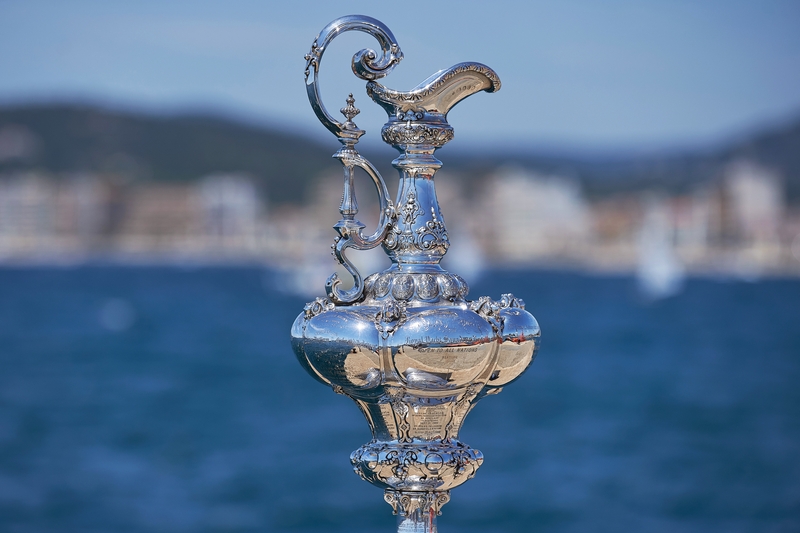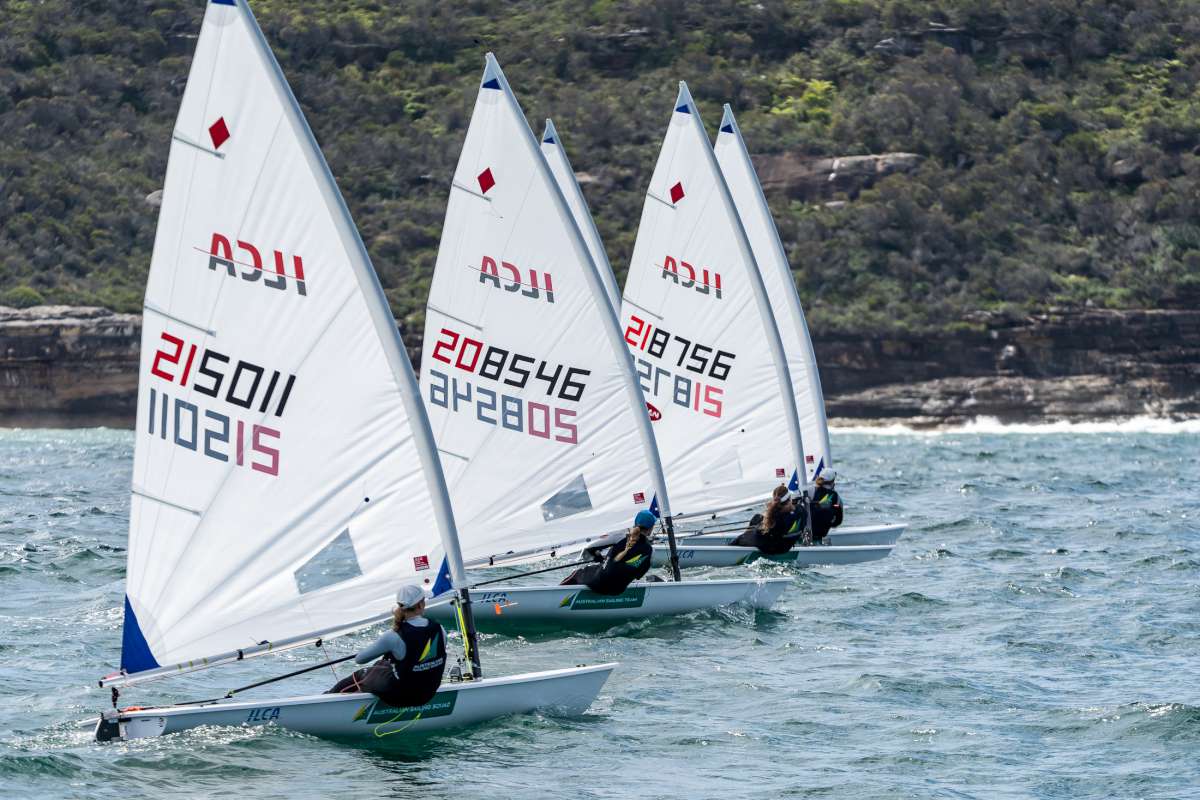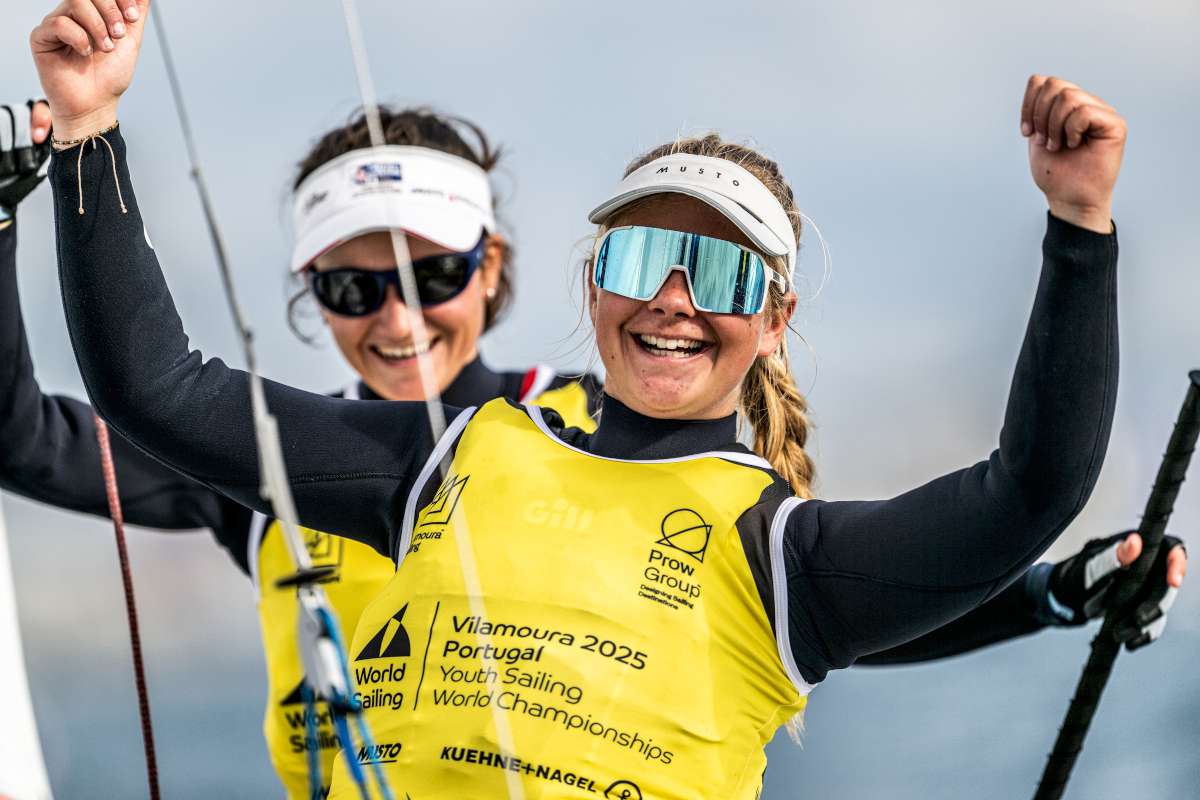Howard Rice has been exploring Tierra del Fuego in a tiny pram dinghy. He has had his share of dramas along the way (see Related Content) but nothing to compare with the latest disaster when a local storm overturned the boat and almost cost Howard his life. Here is a report from friend Josh Colvin and Howard's response to social media “experts” who criticised him after reading of his demise:
Kelp was a huge problem. Howard says the voyage became more dangerous after he got past the Strait of Magellan into the remote southern islands, largely because of the kelp. It might not sound like a big deal, but he spent days fighting to get through the kelp to safe anchorages—cutting it away with his knife, playing his centerboard and rudder to negotiate, and trying to set and raise anchors in it. It was both exhausting and dangerous. Howard was well-prepared for this voyage and had considered almost every contingency, but he says the constant, thick kelp beds were his biggest miscalculation. Imagine sailing in the most remote of places and arriving at what GPS and charts appear to suggest is a perfect anchorage only to find it utterly unusable, forcing you to push on regardless of weather or time of day.
He described being stuck out in horrible weather one day—getting blasted by williwaws—and unable to get to a proper anchorage for all of the kelp. Luckily he came across some sort of a big rope that was strung across from one point or outcropping to another. He said these things are found down there occasionally as passing boats supposedly tie-off to them, sometimes with their engines still running while they ride out williwaws and weather. Howard tied there but ended up stuck in that spot for several days as the wind never abated, frequently trying to knock Southern Cross down. As a result he lay on the cockpit sole in his drysuit, knife open at the ready, unable to set his boom tent, eat, or sleep.
He says eventually he realized he needed to move or he was likely to die there. The boat was close to a rocky shore and being tossed about viciously. Somehow he managed to sail off in conditions he says “you just don’t sail in,” and headed for what was to be his last ditch hope for a safe anchorage.
He’d by now conceded he might have to ditch the boat or run it onto a rocky shore if the anchorage didn’t pan out, so he prepared his series of ditch bags. I guess when he rounded the point near his potential harbor it proved to be another wind-strewn, kelp-clogged cove with rocks all around. But given the circumstances he felt he had little choice at this point but to try to push through the kelp for shore. Playing his mizzen and centerboard he made it some distance, and then he took to the oars, only to have an oar catch in the kelp, the boat spin around and rip the oar away, and nearly throw him into the water.
I’m a little unclear about the sequence of events from here, but I think he said he somehow came across another one of those communal mooring lines and was able to tie-off to it. Unfortunately the winds were only getting worse now and it was clear he was in trouble. It was about this time he first heard the screaming. Not a voice, or noise in the rigging, but a sound, he says, emanating entirely from some sort of a rotating wind phenomena he described as “cyclonic.” These visible wind formations were suddenly swirling wildly around him—dozens of them—lifting kelp off the beach and ripping rivers of white froth across the sea.
Important note: I mentioned in the previous post that Howard had endured 40+ knot winds. That was a gross error based on some confusion with the translation. What was mistakenly described to me as 83 kilometer-per-hour winds (44 knots) were in fact 83 mile-per-hour or 70-knot winds. These figures and many other details are apparently corroborated by the Chilean Navy’s report. In fact, winds were so bad during this day and night that the Chilean Navy had shut down all shipping traffic in the region.
Howard says he was mesmerized. Transfixed. He couldn’t believe his eyes. Soon after hearing the devil wind shrieking he was hit by one of these blasts. Moored on the rope with all sails down he was capsized immediately. He went to work righting the boat and was able to get her back on her feet and re-board, but he was hit again and Southern Cross was knocked over for a second time. Again he righted the boat and re-boarded.
Finally he was hit by a third blast and, in an instant, Southern Cross was completely upside down. He said there was no increasing heel or motion indicating what was about to happen—this time he just found himself suddenly underwater beneath the boat. He managed to swim out from under her and just as he was pulling himself up on the skeg to attempt another righting, another blast came through and tore him away from the boat.
He choked up a bit talking about this. I’ll leave it to him to tell, or not, what exactly went through his mind, but I remember he said he was thinking 'So this is how it ends'.
Fortunately one of his ditch bags and a cockpit cushion washed past him and he was able to grab them. At this point he started swimming toward shore, using only his legs while he held on to the bag and cushion, not at all sure he’d make it. Somehow, after something like an hour and fifteen minutes in the frigid water he made it to the shallows and crawled ashore. (His drysuit was not, as previously reported, damaged, and it undoubtedly saved his life.)
Eventually he was able to make contact with the navy who, fortuitously, happened to have a gunboat in the area. After barely surviving the night ashore, he was rescued. He was hypothermic (core temperature of 90º) his hands, feet, and muscles in bad shape, but he was alive.
There is obviously a lot more to tell, but we’ll wait for Howard to do that in his own voice. When we spoke, he was working with locals to find a fishing boat owner or someone else willing to take him back to retrieve “Southern Cross”, which he is almost certain is right where he left her. Contrary to the early reports, the boat never went on the rocks or was particularly damaged, she is, he says, likely still sitting on her side, tied-off where he last saw her. He says he can’t afford a formal salvage fee, so he’s trying to find someone who will help bring her back for less money.
Some of you have asked if there is anything you can do to help. Howard conceded recovering the boat might be prohibitively expensive. I told him we’d be willing to put up a PayPal donation button for him and transfer any funds received. He said he would appreciate our doing that and he would refund any money that doesn’t end up being required. If you’d like to pitch in to his “Southern Cross” recovery fund, you can do so at the bottom of this page.
For those of you wondering, Howard says he did have the waterproof cameras onboard recording (as part of the Below 40 South film project) during some of the extreme weather. He’s hopeful the memory cards and cameras can be retrieved when he gets back to the boat.
Stay tuned. More information as it becomes available. There is also an update posted at below40south.com/blog
—Josh Colvin
Howard answers his critics:
Thanks to those folks here who have expressed good wishes and opinions whether positive or negative.
Here are a few facts and then I don’t have much else to say really as respectfully I do not feel I owe anyone an explanation about anything I am doing or have done in boats.
No one need be in support of my voyage as I did not ever ask for support.
But for the record:
I did not voyage in an irresponsible manner. Respectfully I don’t care if people shoot at what I am doing or armchair with opinions, we are all entitled to them. There may be folks out there who might feel justified and fulfilled in their view of “I told you so, I knew this would be a disaster”, too bad for them and fine with me. My voyage is not and has not been a disaster. A voyage cannot be judged by one day, it in my mind has to be seen as a whole. Is the climber on Everest who cannot summit a disaster? I don’t think so. I set no lofty objective or stated goal other than to explore into the southwest islands of Tierra del Fuego and this I have accomplished and am planning to continue.
I set out to accomplish nothing more than this. Most importantly I set out to live more fully, explore a little and to challenge my skills and in the process grow and learn. Through this learning I hoped to become a better sailor and I am now a better sailor. The day of days is now in my personal experience file and I find it to be highly valuable. Few people have experienced what I experienced and I can perhaps help others by what I have learned. For example I know I can help In Reach Delorme make a better device and plan to write to them.
My voyage, my responsibility and in the end my joy and I mean I had and am having an astounding, wonderful and challenging experience. It is not by any means finished.
- Four days ago I was officially told a Chilean hydrographic study of the region has shown between a 40% and 60% increase in kelp in the past 20 years. I have sailed safely and without incidence through the region and rounded Cape Horn in a far more fragile boat and in the process understood the kelp. I have sailed in kelp in many places but here, this time I realized I had my hands full once I exited the Strait of Magellan.
- I made my plans based on what I knew of the region and I just didn’t know there was such an increase in kelp beds, never occurred to me that there would be. Is this an oversight? Of course but I figured my way through it as best I could. The Armada and the local fishing fleet have serious challenges with the kelp outgrowth. It is speculated that the out growth may be due to ocean warming, who knows.
- Small does not necessarily equate with being unseaworthy. I was able to access areas and anchorages no larger boat could have ever seen. The feeling of sailing a small wooden boat of my hand down the Strait of Magellan and through Tierra del Fuego was and is astoundingly satisfying. I loved every minute of it (well almost;-)
- Cyclonic wind events are very very rare here but they occur. The fisherman who I will be departing with today to retrieve my boat owns a small sailboat in Pt Williams and he has also experienced the cyclonic winds once. His boat barely made it and it is a small keel boat. I equate what happened to me as being similar to a well prepared, fit mountain climber who gets hit by an avalanche. It happens.
- I was well equipped, lived large aboard my small boat, ate well, read good books as I patiently waited for weather windows, which was the strategy I employed.
- No one here is angry at me, there have been two newspaper stories, both positive.
- Calling for help is a first for me but I had no choice after being blown off of my boat by a cyclone during the righting process. I was well prepared to survive and I did. I was in the water for a long time and my Ocean Rodeo dry suit was the right tool. When it was time to call for help I did not hesitate.
- No one was put in danger coming to get me. The patrol boat was by chance an hour away heading my way and for Punta Arenas and had ended up hiding out (actually circle motoring) from the same cyclonic winds. The captain informed me they clocked sustained 72 knot winds and they witnessed the cyclones I witnessed. If I had been anchored in a larger boat I wonder if I would have made it at all. Juan my friend at Nao Victoria who grew up on the shore of the Strait of Magellan told me these cyclonic winds have actually crushed big fishing boats. Large sail and power boats are lost here all the time, there were two in December and another at the same time as my situation.
- I met and exceeded every Armada safety requirement and was told I was better equipped than many of the yachts they inspect in the zarpe process. They turn down many, I was not turned down.
- Why would I sail in such a place in a small boat? Because I wanted to. I knew the risks going in and I prepared for them but admittedly did not know of the kelp out growth.
- I do not have to answer to anyone but myself as I did not engage in pre voyage sponsorship. As I stated my idea, my voyage, my responsibility.
- I try to live my life fully and hope to never face the day when I am old looking back and regretting I did not live or take a few chances in life. I am simply living out my vision.
- I am happy now, whether I have my boat or not. I was happy beyond words during the voyage in spite of the challenges. I was prepared to lose my boat, any sailor should be regardless of the size or type of boat. Boats are just things and things don’t matter.
In closing
I am fulfilling a personal vision. There are people in this precious life we are given who dream but never do. I hope they are happy. I see the world this way. There are millions of people where 1+1 simply has to equal 2 and we need them to keep everything running.
There are far fewer people for whom 1+1=3 or more (innovators, adventurers, artists, thinkers, innovators, folks with crazy ideas (crazy until they work). I linger on the edges of 1+1=3, in fact I aspire to be in this group in much that I do. I admire those in both groups but for sure those who try, who innovate, who take chances, who define their lives and go after their dreams, who fulfill their personal visions and personal inner life legends.
I had a dream, I built a 12 foot boat, I shipped it to Patagonia, I sailed the Strait of Magellan, I explored a big chunk of the islands of Tierra del Fuego, I faced down a day of days and I am so glad to have the opportunity to do this. I have seen things that are so beautiful they almost brought tears to my eyes.
I am alive because I saved my life. The Armada did not save my life, I did by persevering in the hour and a half I was in the water. I could have survived alone on Georgiana with my ditch bag and capsized boat nearby but thought given my condition I should call for help while I could because to have waited until I was perhaps in worse condition would have complicated everything and perhaps put others in danger. The Armada personnel who came to shore to pick me up were never in danger. It was a non event of sorts. I walked to their small boat with a little assistance.
I thought I may have been able to wait out the weather and somehow get to my boat, the food, beach and right her and and and but in the end I made the right decision. I was obligated as all yachts are who sail Chilean waters to report in each day and give detail of my situation. I believe if I had persevered on and informed the Armada of my situation and wish so solider on they would have come any way. They are admirable as a navy and take no chances with life.
I am far from done and now that I am feeling better am eagerly looking forward to todays departure south again and what the next weeks bring.
I write these words with the greatest respect for all reading here.
Howard Rice
Footnote: On March 5, 2017 Howard arrived at Southern Cross and the boat was rescued.


























